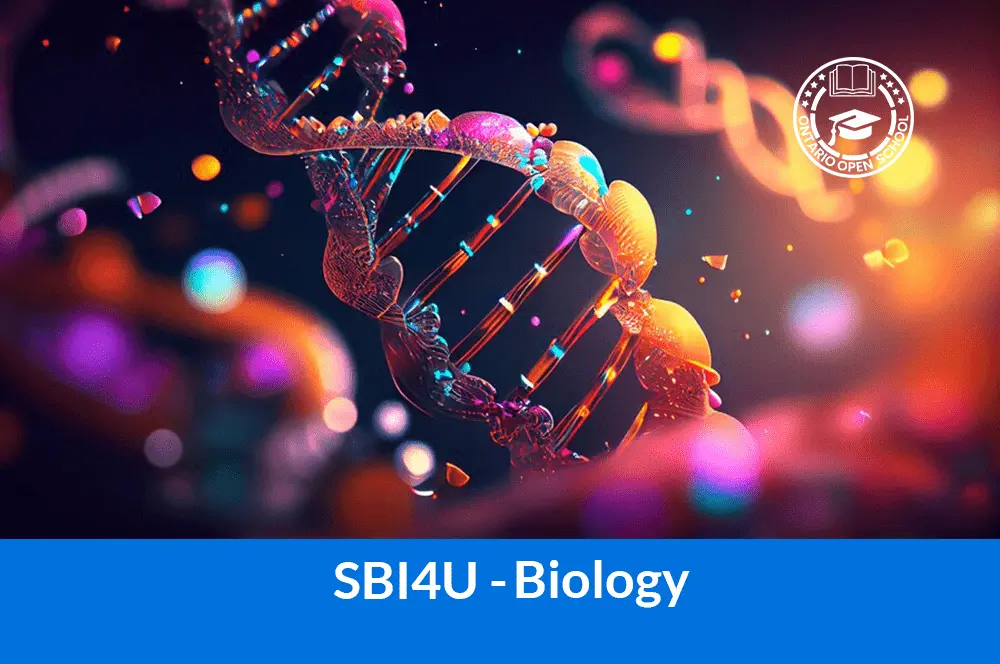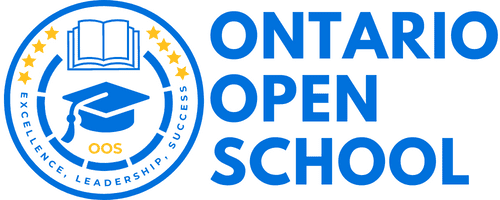- info@ontarioopenschool.com
- 647-494-4499
-
Unit 100 - 29 Gervais Drive, North York, ON.
M3C 1Y9
Copyright 2024 Ontario Open School Inc. All Rights Reserved.
This course provides students with the opportunity for in-depth study of the concepts and processes that occur in biological systems. Students will study theory and conduct investigations in the areas of biochemistry, metabolic processes, molecular genetics, homeostasis, and population dynamics. Emphasis will be placed on the achievement of detailed knowledge and the refinement of skills needed for further study in various branches of the life sciences and related fields.
Unit Order | Unit Name | Suggested Time |
|---|---|---|
| Unit 1 | Scientific Investigation Skills and Career Exploration | Integrated throughout the course |
| Unit 2 | Biochemistry Students will analyze the technological applications used in the food, pharmaceutical, and medical industries that affect biological processes and cellular functions. They will investigate how molecules and their chemical properties affect cellular processes and biochemical reactions. Students will demonstrate an understanding of the important structural and functional roles compounds play in the cells of all living organisms. | 20 hours |
| Unit 3 | Metabolic Processes Students will investigate the chemical changes and energy conversions that occur in metabolic processes. They will demonstrate the ways in which an understanding of metabolic processes enables people to make informed choices with respect to a range of personal, societal, and environmental issues. | 20 hours |
| Unit 4 | Molecular Genetics Students will demonstrate an understanding that DNA contains all the genetic information for any living organism. They will investigate how proteins control a wide variety of cellular processes. Students will assess the social, legal, and ethical implications of genetic research and biotechnology. | 20 hours |
| Unit 5 | Homeostasis Students will demonstrate an understanding of the strict limits on the internal conditions that organisms can tolerate. They will investigate the ways in which organ systems that maintain homeostasis rely on feedback mechanisms. Students will also explore the environmental factors that affect homeostasis. | 20 hours |
| Unit 6 | Population Dynamics Students will demonstrate an understanding of how population growth follows predictable patterns. They will investigate how increased consumption of resources and production of waste is associated with population growth and results in specific stresses that affect Earth’s sustainability. Students will assess technological developments that can contribute to or help offset the ecological footprint associated with population growth and the consumption of natural resources | 20 hours |
| Final Evaluation 30% | Final Project Final Exam | 8 hours 2 hours |
| Total | 110 Hours |
A wide variety of instructional strategies are used to provide learning opportunities to accommodate a variety of learning styles, interests and ability levels. These strategies include, but are not limited to:
| Oral Presentation | Activity Learning Centers | Carousel | Guided Exploration |
| Discussion | Think Pair Share | Lecture | |
| Socratic Lesson | Visual Stimuli | Worksheet | |
| Independent Study | Note Making | Inquiry Process | |
| Research Process | Scientific Method | Concept Map | |
| Computer Assisted Instruction | Media Presentation | Jigsaw | |
| Consequence Map | Flow Chart | Brainstorming | |
| Mind Map | Role Play | Demonstration | |
| Problem Solving | Experimenting | Reflection |
Purpose
The primary purpose of assessment is to improve student learning. Assessment relates directly to the expectations for the course.
A variety of assessments for and as learning are conducted on a regular basis to allow ample opportunities for students to improve and ultimately demonstrate their full range of learning and for the teacher to gather information to provide feedback. Assessment tasks relate to the success criteria set out in lesson plans. Success criteria allow students to see what quality looks like.
Evaluation is the process of judging the quality of student work in relation to the achievement chart categories and criteria and assigning a percentage grade to represent that quality. Evaluation is based on gathering evidence of student achievement through:
Assessment for Learning – we provide feedback and coaching. Assessment FOR Learning is the process of seeking and interpreting evidence for the use of learners and their teachers to decide where the learners are in their learning, where they need to go, and how best to go there.
Assessment as Learning – we help students monitor progress, set goals, reflect on their learning
Assessment AS Learning is the process of the explicit fostering of students’ capacity over time to be their own best assessors, but teachers need to start by presenting and modeling external, structured opportunities for students to assess themselves.
Assessment of Learning – we use assessments to provide evaluative statements about student achievement. Assessment OF Learning is the assessment that becomes public and results in statements of symbols
(marks/grades/levels of achievement) about how well students are learning. It often contributes to pivotal decisions that will affect students’ future.
ASSESSMENT TOOLS
| Units | Duration | EXP. | AFL | AAL | AOL | K
25% |
A
25% |
C
25% |
T 25% |
|
|
70% |
A | Integrated throughout the course | A1-A2 |
Student – Teacher Conferencing |
Peer Assessment | Poster Presentation | • | • | • | • |
| B | 20 hours | B1-B3 | Worksheet
Class Discussion |
KWL Chart | Unit Test
Q/A Session |
• | • | • | • | |
| C | 25 hours | C1-C3 | Assigned Questions
Group Discussion |
Learning Log | Unit Test
Poster Presentation |
• | • | • | • | |
| D | 20 hours | D1-D3 | Student – Teacher Conferencing | Reflective Discussion | Unit Test
Written Assignment |
• | • | • | • | |
| E | 25 hours | E1-E3 | Homework
Exit Card
|
Peer Pair Assessment | Unit Test
Performance Task |
• | • | • | • | |
| F | 20 hours | F1-F3 | Q/A Session
Diagnostic Test |
Student-Teacher Conferencing | Unit Test
Collaborative Project |
• | • | • | • | |
| 30% | 2 hours |
Final Exam 20% (B1-F3) Final Project 10% (A1-A2)
|
• | • | • | • | ||||
Resources
Grading
Weighting of categories
| Knowledge/Understanding | Thinking/Inquiry | Communication | Application |
| 25% | 25% | 25% | 25% |

Course Grade | Grade 12 |
|---|---|
Course Code | SBI4U |
Course Category | Science |
Course Type | University Preparation |
Course Delivery | Online |
Course Duration | 8hrs |
Course Credit | 0 |
Copyright 2024 Ontario Open School Inc. All Rights Reserved.
